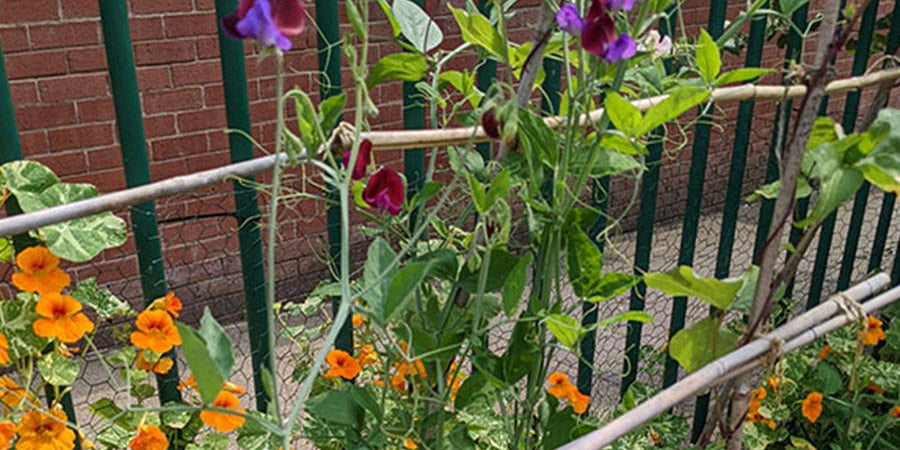Greetings from Lancashire...
October Sowings & Advice

Thank goodness for some rain at last! We’re getting back to normal levels of rain in Lancashire now and I hope you are too, wherever you grow. We’ve been lucky in this part of the country as our heavy clay soil retains moisture, so our grass and trees have stayed green throughout the long, hot summer. But I know that parts of the country with sandy, well-drained soil have been hard hit with trees losing their leaves early and parched grass. If you’re growing on that type of soil, you should aim to mulch your beds with plenty of manure this autumn/winter. Manure is the best way to retain moisture in the soil and by adding a thick layer (8cm plus) of it now, you’ll be prepared for dry weather next year.
What Seeds To Sow In October?
I’ve been very pleased with the crops from my French Bean Climbing ‘Cosse Violette’ which I sowed in June. These dark purple bean pods taste good and have looked beautiful grown with Sweet Peas in the Community Garden I teach in. Both of them are tall, climbing plants that need support, so they’ve grown well together, twisting up 1.8m high bamboo canes. The Chicory ‘Palla Rossa’ (Radicchio) and Endive ‘Pancalieri’ have also thrived and resisted any slug attacks, as I’d hoped. These vegetables look similar to lettuce, but their bitter taste means that I prefer to cook them rather than eat them raw.
This month I’m sowing the sweeter tasting Kale ‘Red Ruble’ as a baby-leaf plant. I’ll sow the seeds 0.5cm deep in containers and keep them well-watered in a sheltered, sunny place. As soon as the leaves get 10cm high, I’ll start to harvest them to eat raw in winter salads. If you’ve got limited outdoor space you can grow these on a windowsill too – the pots or containers only need to be 10cm deep if you harvest the plants as baby leaves (or only 5cm deep for microgreens).
A herb I’m growing on my windowsills now is Lemon Basil; a great combination of lemon scent and aromatic Basil flavour …. what’s not to like? I’ll be growing this inside as the seeds need to be 18–20 ° C to germinate. I’ll keep the pots moist but won’t be overwatering as this can encourage sciarid flies (aka fungus gnats); those tiny bugs that thrive in warm, damp compost. I’ve used coir compost as it’s less likely to contain insect eggs.
Thinking ahead for next year’s crops I’ve planted some Broad Bean ‘Crimson Flowered’. These heritage beans need to grow outside into deep containers or beds with plenty of space; I’m leaving 50cm between each row of beans (planted 5cm deep and 20cm apart). They’ll germinate in the autumn and then rest over winter before growing taller, flowering and producing pods by June next year. I’ve put in canes and string to support them as they can grow 90cm tall. They also look good planted in a flower bed as the pink flowers give excellent spring colour.
With more forward planning for a spring crop I’ve sown seeds for Cabbage ‘Duncan’. I’ve started them off undercover in small 9cm pots 1cm deep in compost. When they’ve grown into sturdy young plants with 5-6 leaves, I’ll harden them off outside over a couple of weeks before planting them out into large outdoor pots. They will grow slowly over the winter and produce tasty, fresh spring greens in March to May.
Final Thoughts
This month…
If you’re growing in raised beds or the ground remember to mulch with a thick layer of organic matter (manure or compost) while the soil is damp in the autumn. This will improve the water retention of your soil for next summer as well as adding important nutrients and microbes to keep the soil healthy.
Read more about Sue's horticultural expertise and projects on her website HERE



